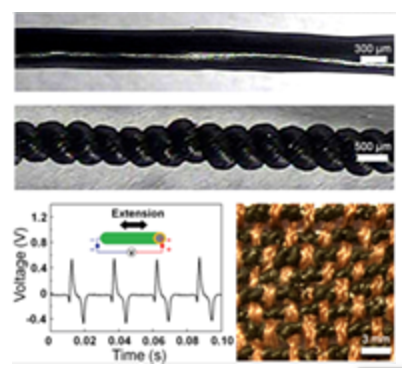 Hyeon Jun Sim and Changsoon ChoiChang Jun Lee, Youn Tae Kim,* Geoffrey M. Spinks, Marcio D. Lima, Ray H. Baughman and Seon Jeong Kim*
Hyeon Jun Sim and Changsoon ChoiChang Jun Lee, Youn Tae Kim,* Geoffrey M. Spinks, Marcio D. Lima, Ray H. Baughman and Seon Jeong Kim*
Center for Bio-Artificial Muscle and Department of Biomedical Engineering, Hanyang University, Seoul 133-791, Korea E-mail: sjk@hanyang.ac.kr
C. ChoiC. J. Lee, Prof. Y. Kim
IT Fusion Technology Research Center and Department of IT Fusion Technology, Chosun University, Gwangju 501-759, Korea
E-mail: petruskim@chosun.ac.kr
Prof. G. M. Spinks
Intelligent Polymer Research Institute, ARC Center of Excellence for Electromaterials Science, University of Wollon- gong, Wollongong, NSW 2522, Australia
Dr. M. D. Lima, Prof. R. H. Baughman
The Alan G. MacDiarmid NanoTech Institute, University of Texas at Dallas, Richardson, TX 75083, USA
*Corresponding author.E-mail: sjk@hanyang.ac.kr.
원문 링크 : http://seonjeongkim.cafe24.com/lin